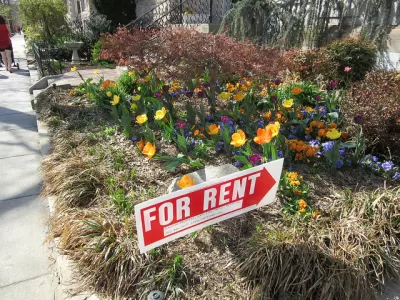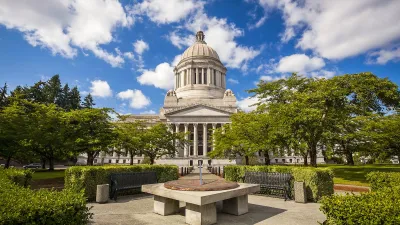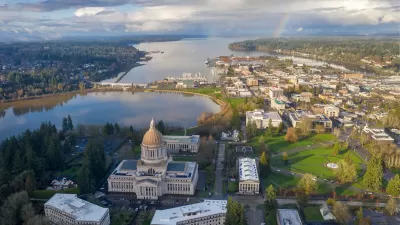While some economists argue that rent control restricts new construction and encourages poor maintenance, proponents of the policy say it's necessary to mitigating skyrocketing rental costs that are putting more households on the brink of eviction.

With rents around the country growing at astronomical rates, the conventional wisdom on rent control is starting to shift, writes Alan Ehrenhalt.
"In 1946, renowned economists Milton Friedman and George Stigler of the University of Chicago published a paper they called Roofs or Ceilings: the Current Housing Problem. They argued that controlling rents allowed landlords to neglect their units and resort to devious means to force their tenants out, enabling rent increases."
But as more and more Americans struggle to pay rent––according to Ehrenhalt, "Americans now pay out an average of 37 percent of their monthly income on housing"––the debate over the benefits of rent control is heating up again. While critics of rent control argue that rent stabilization regulations stifle new construction, research shows little evidence proving as much.
This past year, rent control has taken center stage in many cities as policymakers debate how to help struggling renters and stabilize the rental market. Ehrenhalt describes the arguments in favor of rent control, including the "continuity and stability" crucial to healthy neighborhoods. Read more details in the source article.
FULL STORY: Why the Conventional Wisdom on Rent Control Isn’t All That Wise

Trump Administration Could Effectively End Housing Voucher Program
Federal officials are eyeing major cuts to the Section 8 program that helps millions of low-income households pay rent.

Planetizen Federal Action Tracker
A weekly monitor of how Trump’s orders and actions are impacting planners and planning in America.

Ken Jennings Launches Transit Web Series
The Jeopardy champ wants you to ride public transit.

Crime Continues to Drop on Philly, San Francisco Transit Systems
SEPTA and BART both saw significant declines in violent crime in the first quarter of 2025.

How South LA Green Spaces Power Community Health and Hope
Green spaces like South L.A. Wetlands Park are helping South Los Angeles residents promote healthy lifestyles, build community, and advocate for improvements that reflect local needs in historically underserved neighborhoods.

Sacramento Plans ‘Quick-Build’ Road Safety Projects
The city wants to accelerate small-scale safety improvements that use low-cost equipment to make an impact at dangerous intersections.
Urban Design for Planners 1: Software Tools
This six-course series explores essential urban design concepts using open source software and equips planners with the tools they need to participate fully in the urban design process.
Planning for Universal Design
Learn the tools for implementing Universal Design in planning regulations.
Heyer Gruel & Associates PA
Ada County Highway District
Institute for Housing and Urban Development Studies (IHS)
City of Grandview
Harvard GSD Executive Education
Toledo-Lucas County Plan Commissions
Salt Lake City
NYU Wagner Graduate School of Public Service





























